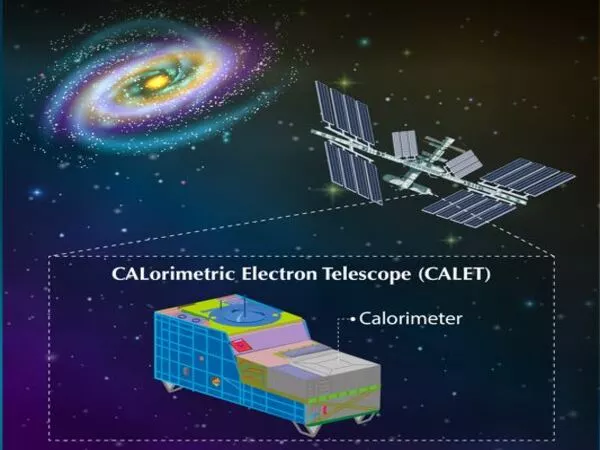Helium nuclei research contributes significantly to our understanding of cosmic ray origin and propagation. Cosmic rays are high-energy particles that constantly bombard the Earth and other celestial bodies, originating primarily from outside the Solar System. They are made up of protons, helium nuclei (alpha particles), heavier nuclei, electrons, and gamma rays.
Since 2015, the CALorimetric Electron Telescope (CALET) on the International Space Station’s Kibo’s Exposed Facility (EF) has been measuring the flux of cosmic ray particles. An international team of researchers has published the results of a direct measurement of the cosmic ray helium spectrum using CALET data in a new study. Analysis of flux data collected between 2015 and 2022 reveals that the energy distribution of cosmic ray helium nuclei follows a Double Broken Power Law, as opposed to the single power-law previously thought to exist.
Theoretical interpretations underpin much of our understanding of the Universe and its mysterious phenomena. Astronomers are studying cosmic rays, which are high-energy charged particles made up of protons, electrons, atomic nuclei, and other subatomic particles, to gain a better understanding of distant objects and energetic phenomena. These studies have revealed that cosmic rays contain all of the elements in the periodic table, implying that these elements come from stars and high-energy events like supernovae. Furthermore, because cosmic rays are charged, their path through space is influenced by the magnetic fields of interstellar phenomena and objects.
CALET has successfully observed the energy spectral structure of cosmic ray helium, particularly spectral hardening beginning at around 1.3 TeV and softening beginning at around 30 TeV.
Kobayashi
Detailed observations of cosmic rays can thus not only shed light on their origins but also decode the existence of high-energy objects and phenomena like supernova remnants, pulsars, and even dark matter. Japan, Italy, and the United States established the CALorimetric Electron Telescope (CALET) on the International Space Station in 2015 in order to better observe high-energy radiations.
The particle flux of protons at high energies was significantly higher than expected, according to observations of the cosmic ray proton spectrum from 50 GeV to 10 TeV in 2018. These findings differed from conventional cosmic ray acceleration and propagation models, which assume a “single power-law distribution,” in which the number of particles decreases as energy increases.
As a result, in a study published in 2022, the CALET team, which included Waseda University researchers, discovered that cosmic ray protons with energies ranging from 50 GeV to 60 TeV obeyed a “Double Broken Power Law.” This law assumes that the number of high-energy particles increases until 10 TeV (known as spectral hardening) and then decreases as energy increases (known as spectral softening).
Extending on these findings, the team has discovered similar spectral hardening and softening trends in the cosmic ray helium spectrum captured over a wide range of energy, from 40 GeV to 250 TeV.

The study, published in the journal Physical Review Letters on 27 April, 2023, was led by Associate Professor Kazuyoshi Kobayashi from Waseda University, Japan, along with contributions from Professor Emeritus Shoji Torii, Principal Investigator of the CALET project, also affiliated with Waseda University, and Research Assistant Paolo Brogi from the University of Siena in Italy.
“CALET has successfully observed the energy spectral structure of cosmic ray helium, particularly spectral hardening beginning at around 1.3 TeV and softening beginning at around 30 TeV,” says Kobayashi.
These findings are based on CALET data collected aboard the International Space Station (ISS) between 2015 and 2022. These observations, which represent the largest energy range for cosmic helium nuclei particles to date, provide additional evidence for particle flux deviation from the single power-law model. The deviation from the expected power-law distribution was more than eight standard deviations away from the mean, indicating a very low likelihood of this deviation occurring by chance.
Notably, the initial spectral hardening observed in this data indicates that there may be distinct sources or mechanisms responsible for accelerating and propagating helium nuclei to high energies. The discovery of these spectral features is also supported by recent Dark Matter Particle Explorer observations, and it calls into question our current understanding of the origin and nature of cosmic rays.
“These findings would significantly contribute to our understanding of cosmic ray acceleration and propagation mechanisms in supernova remnants,” says Torii. These discoveries undoubtedly improve our understanding of the Universe. Even as we plan manned missions to the Moon and Mars, the energy distribution of cosmic ray particles can provide more information about the radiation environment in space and its effects on astronauts.





